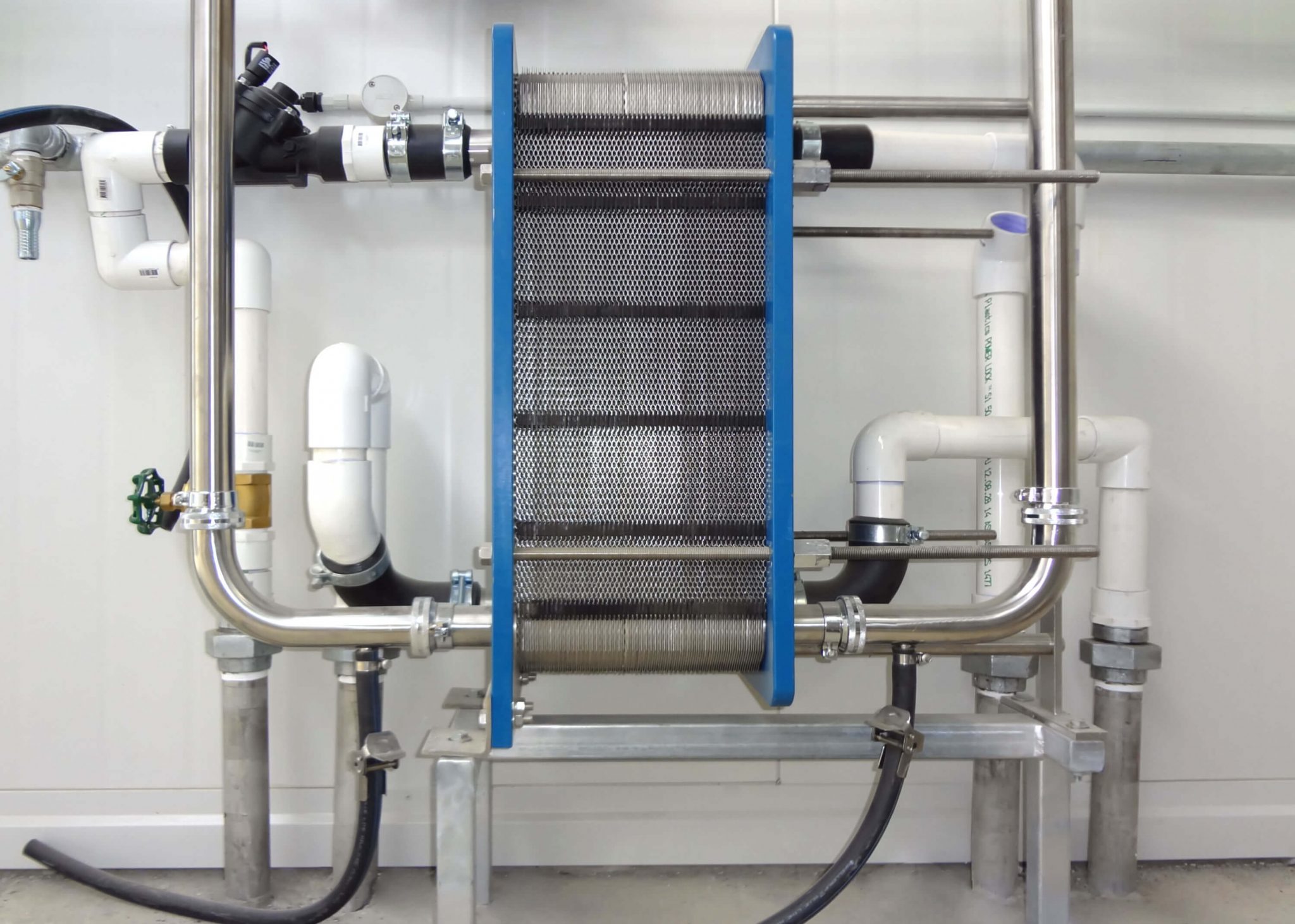Plate Heat Exchanger
Cooling milk before it reaches the vat makes a difference
Under ideal conditions, our plate heat exchanger (PHE) units reduce the temperature of milk from a physiological range to within 2-3 °C of groundwater before it reaches the vat*. We provide two types of PHE, single stage and dual stage. Both types are floor mounted, made from 304 grade stainless steel, and support flow rates from 3,000 L to 10,000 L per hour.

Single or dual stage plate heat exchanger?
Single stage PHE units use farm water to cool milk. Dual stage PHE units use farm water supply for an initial stage, and active cooling for a secondary stage. The choice between the two comes down to whether the available ground water has a temperature low enough to effectively reduce milk temperature, for a given volume flow rate of milk.
Our single stage PHE units are expandable and stackable. Two used in sequence are, in some cases, enough even for 80 – 100 bail dairy plants. But this isn’t always the case. If the initial temperature drop doesn’t reach around 20 °C, then a dual stage unit is recommended. For hot, arid, climates a dual-stage PHE is usually the way to go.
An efficient plate heat exchanger makes sense
The refrigeration system of a milk vat has the highest energy demand of the entire milking plant. Passive milk cooling reduces the electricity demand of the plant up to 30 %. That’s how a good PHE can save money.
There is another reason why it matters too. It’s called the Ministry for Primary Industries New Zealand Code of Practice for the design and operation of Farm Dairies.
New milk cooling standards are set to come into effect in New Zealand by 2018. The code states that milk needs to reach 10 °C or below within four hours of the commencement of milking.
Within six hours from the commencement of milking, or two hours from the completion of milking, milk temperature needs to reach 6 °C or below. The new code also states that milk needs to be at or below 6 °C without freezing until collection. Milk in the chiller vat must never exceed 10 °C.
And why is 6 °C or below so important? That’s because Staphylococcus aureus and Streptococcus uberis grow from 7 °C and 10 °C, respectively. Both strains over represent bacteria in milk from sub-clinical mastitis cows.
*To achieve an initial milk temperature drop close to groundwater temperature, water flow, milk flow, cooler size, and cleanliness all need to be optimal.
